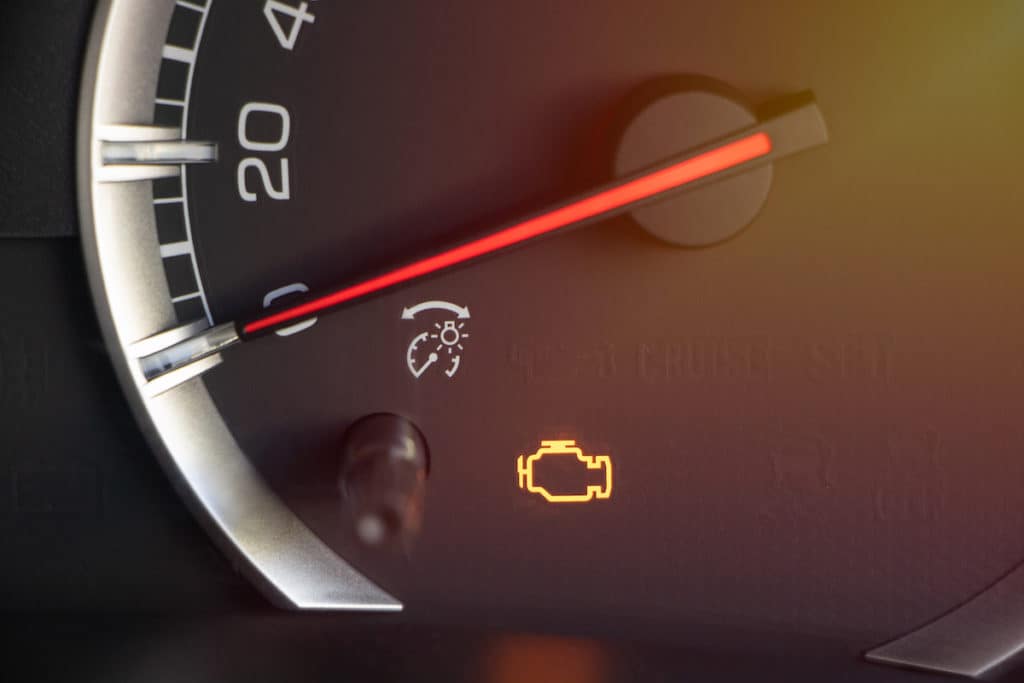The check engine light (CEL) is one of the most common and often misunderstood warnings that can appear on your vehicle’s dashboard. While its sudden appearance may cause concern, it’s important to understand what this light means and how to address it effectively.
What Is the Check Engine Light?
The check engine light is part of your car’s onboard diagnostics (OBD) system, designed to monitor your vehicle’s performance and detect potential issues. When the system detects a problem that could impact the car’s emissions, fuel efficiency, or other critical systems, it triggers the light to alert the driver.
There are two main types of check engine lights:
- Solid Check Engine Light: Indicates a less urgent problem, such as a loose gas cap or a malfunctioning sensor. While it needs attention, you may not need immediate repairs.
- Flashing Check Engine Light: Signals a serious issue, such as an engine misfire, which could lead to more severe damage if not addressed promptly. This type of light should never be ignored, and driving with a flashing CEL can further harm the engine.
Common Reasons for the Check Engine Light
There are many reasons why your check engine light might come on, ranging from simple fixes to more complex repairs. Here are some of the most common causes:
- Loose or Faulty Gas Cap: A loose gas cap can cause fuel vapor to escape from your fuel tank, triggering the light. Simply tightening or replacing the cap may resolve the issue.
- Faulty Oxygen Sensor: The oxygen sensor monitors the exhaust system and helps manage the air-to-fuel ratio. A faulty sensor can reduce fuel efficiency and increase emissions, necessitating replacement.
- Malfunctioning Catalytic Converter: The catalytic converter helps reduce harmful emissions from your car’s exhaust system. If it fails, it can cause poor engine performance and increased pollution. Replacing a catalytic converter can be costly, so early detection is important.
- Worn Spark Plugs or Ignition Coils: Spark plugs and ignition coils are essential components for igniting the fuel in your engine. When they wear out, they can cause engine misfires, reduced power, and lower fuel efficiency.
- Mass Airflow Sensor Issues: The mass airflow (MAF) sensor measures the amount of air entering the engine to help regulate fuel injection. If the sensor fails, it can lead to poor performance and reduced gas mileage.
- Vacuum Leaks: Vacuum leaks can occur when the hoses connected to the engine become cracked or damaged, affecting engine performance and triggering the check engine light.
What to Do When the Check Engine Light Comes On
If your check engine light comes on, follow these steps to address the problem:
- Check for Obvious Issues: Start by inspecting common culprits, such as the gas cap. Tighten it if necessary and see if the light turns off after a few drives.
- Use an OBD-II Scanner: An OBD-II scanner can read the diagnostic trouble codes (DTCs) that triggered the light. These codes can give you a clearer idea of what’s wrong, allowing you to decide whether you need to visit a mechanic.
- Pay Attention to Vehicle Behavior: If your car seems to be running normally, you may not need to panic. However, if you notice unusual symptoms like rough idling, poor acceleration, or strange noises, seek professional help immediately.
- Schedule Repairs: Even if your car seems fine, it’s important to address the issue promptly. Ignoring the check engine light can lead to more significant problems over time, resulting in more costly repairs down the road.
Understanding Diagnostic Trouble Codes (DTCs)
When the check engine light is triggered, your vehicle’s OBD system generates a diagnostic trouble code (DTC) that corresponds to the detected issue. These codes are typically alphanumeric and can be read using an OBD-II scanner. Here’s a basic breakdown of what these codes mean:
- P-codes (Powertrain): These codes relate to the engine, transmission, and emissions systems.
- B-codes (Body): B-codes deal with issues related to the body of the vehicle, such as airbags or climate control.
- C-codes (Chassis): These codes are linked to the vehicle’s chassis, including the brakes, suspension, and steering systems.
- U-codes (Network Communication): U-codes indicate issues with the vehicle’s network communication system, which connects various onboard modules.
Understanding these codes can help you and your mechanic pinpoint the issue more efficiently, leading to quicker repairs and less downtime for your vehicle.
How to Prevent the Check Engine Light from Coming On
While you can’t always prevent the check engine light from coming on, regular maintenance and proactive care can reduce the chances of an unexpected warning light. Here are some tips to keep your vehicle running smoothly:
- Perform Regular Maintenance: Follow your vehicle’s maintenance schedule for oil changes, filter replacements, and inspections. This helps keep your engine and other systems in optimal condition.
- Keep an Eye on Fluids: Regularly check your vehicle’s fluids, including oil, coolant, and transmission fluid, to ensure they’re at the correct levels and free of contaminants.
- Replace Worn Components: Timely replacement of spark plugs, air filters, and other essential parts can prevent more significant issues that could trigger the check engine light.
- Pay Attention to Early Warning Signs: If you notice strange sounds, smells, or performance changes in your vehicle, don’t wait for the check engine light to come on. Addressing problems early can save you time and money.
Conclusion
The check engine light can be alarming, but it’s a crucial indicator of your vehicle’s health. Understanding its meaning, diagnosing the underlying issue, and taking prompt action can help you avoid costly repairs and ensure your car stays on the road. By staying informed and performing regular maintenance, you can minimize the chances of encountering unexpected issues and keep your vehicle running smoothly.
